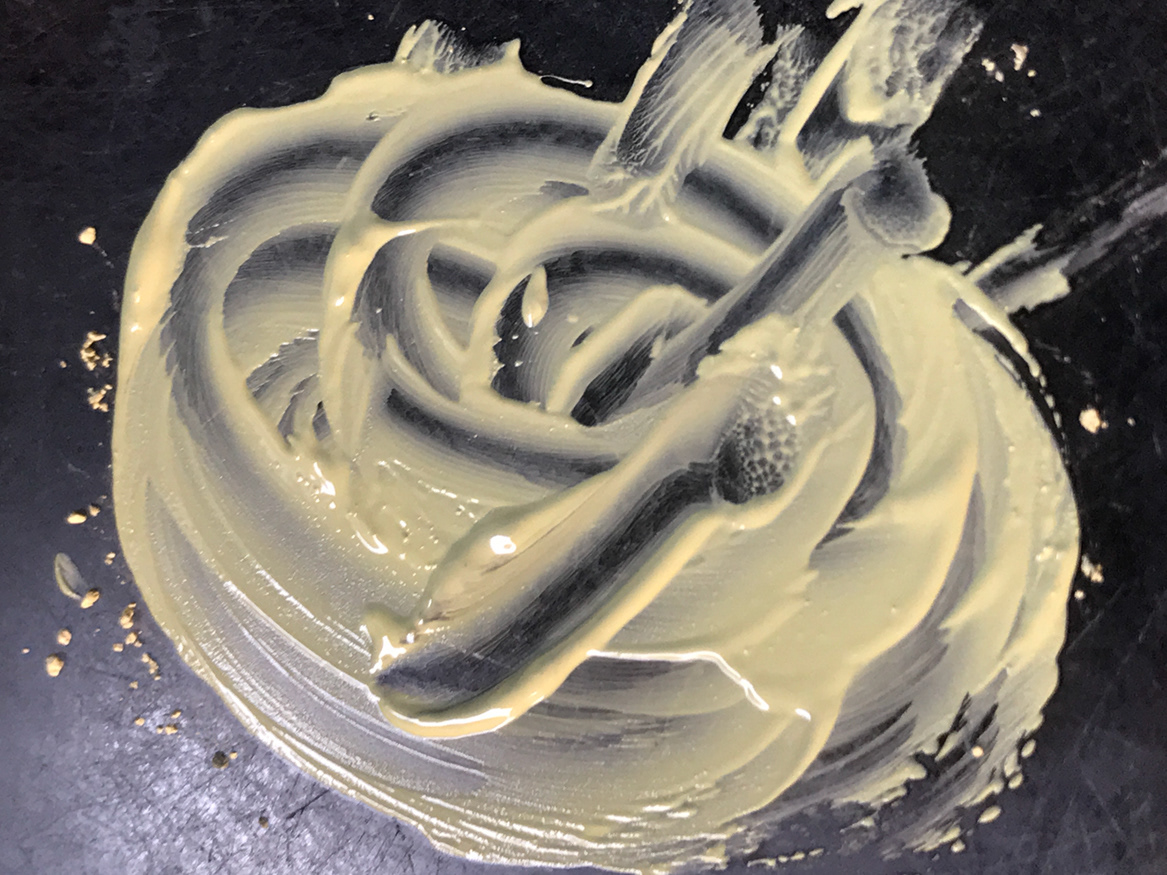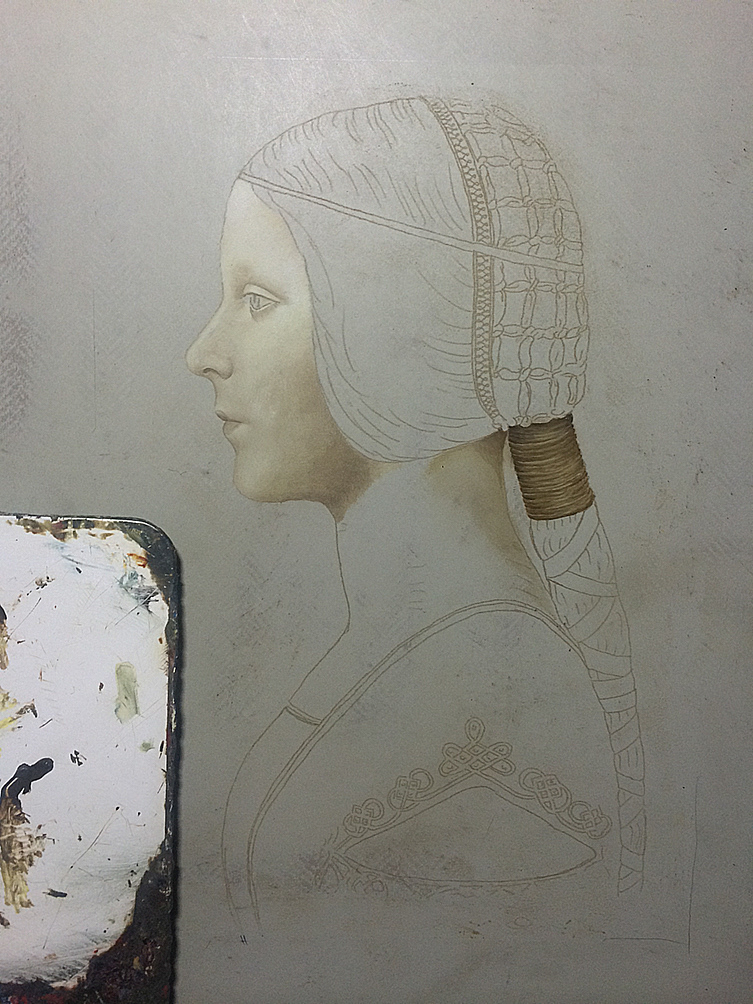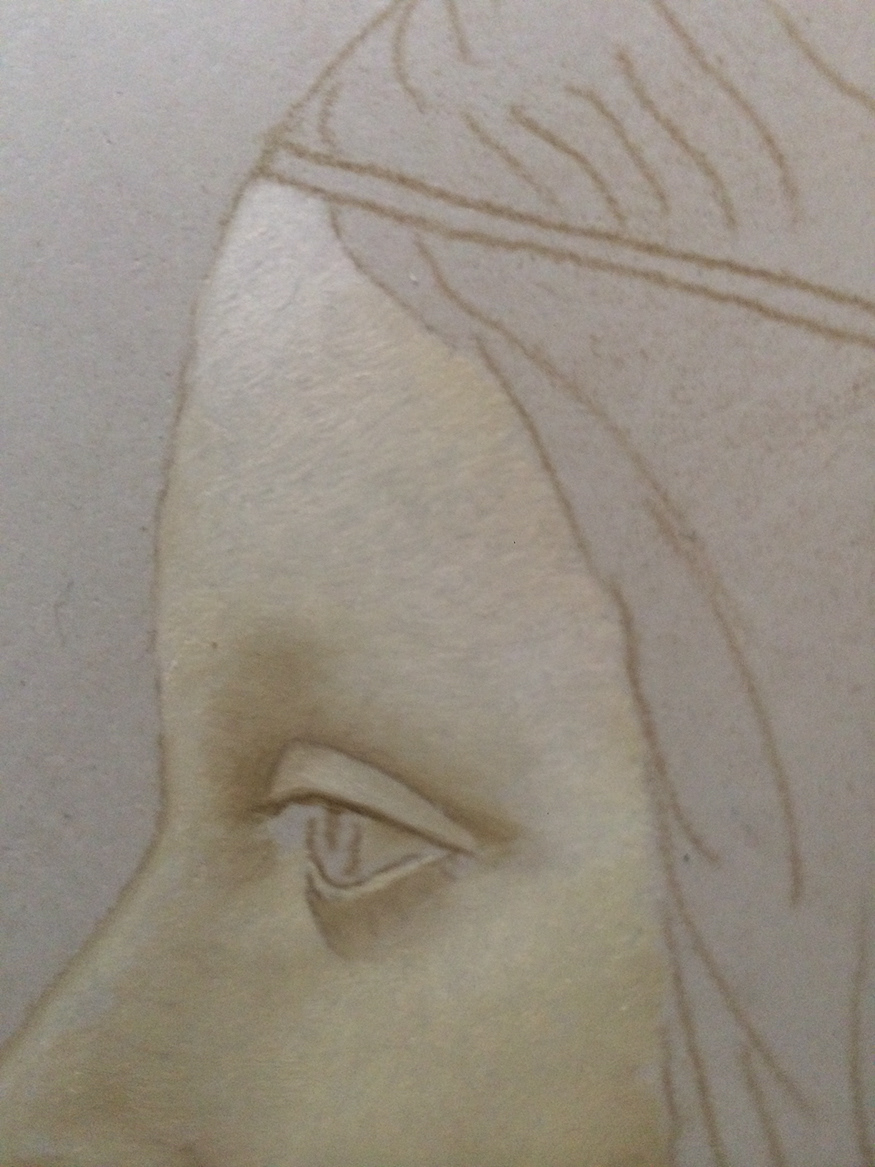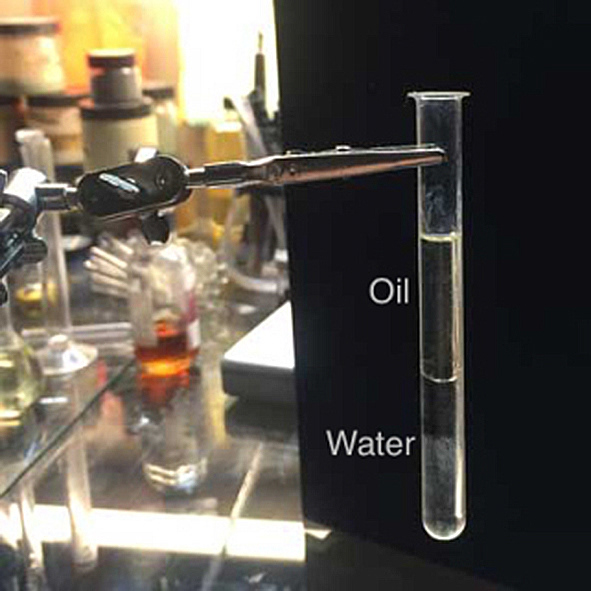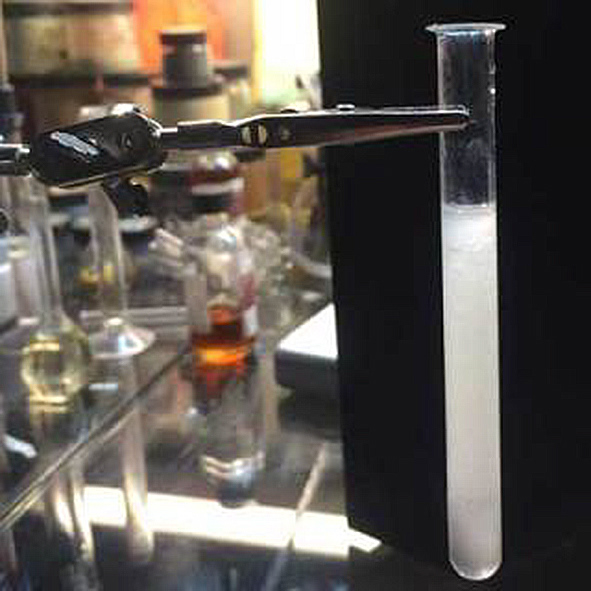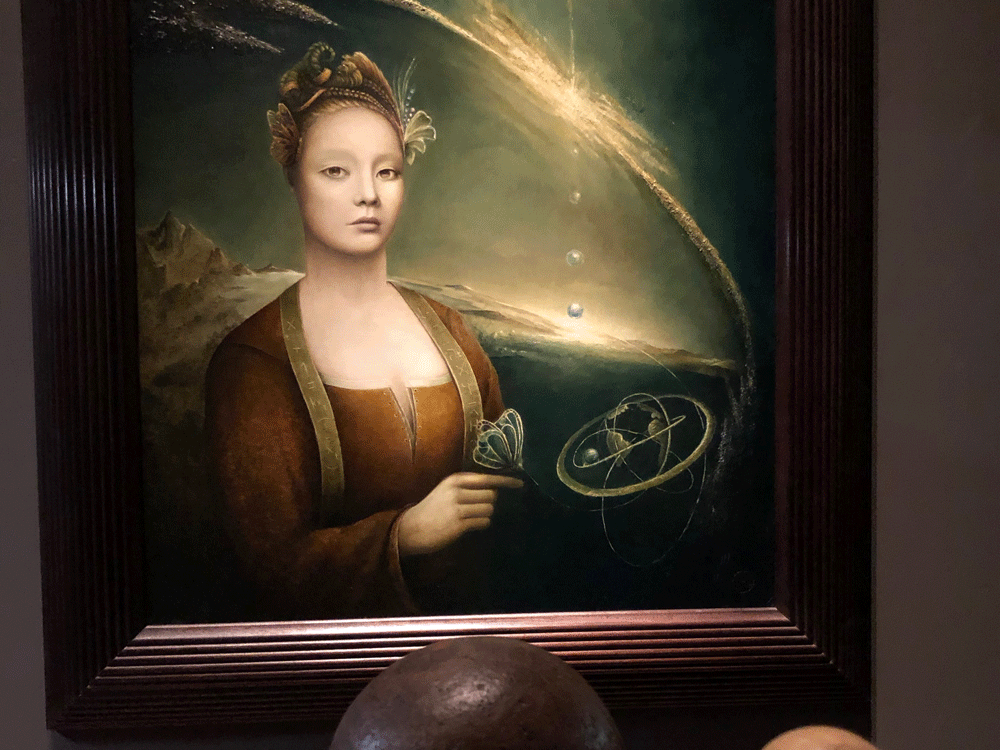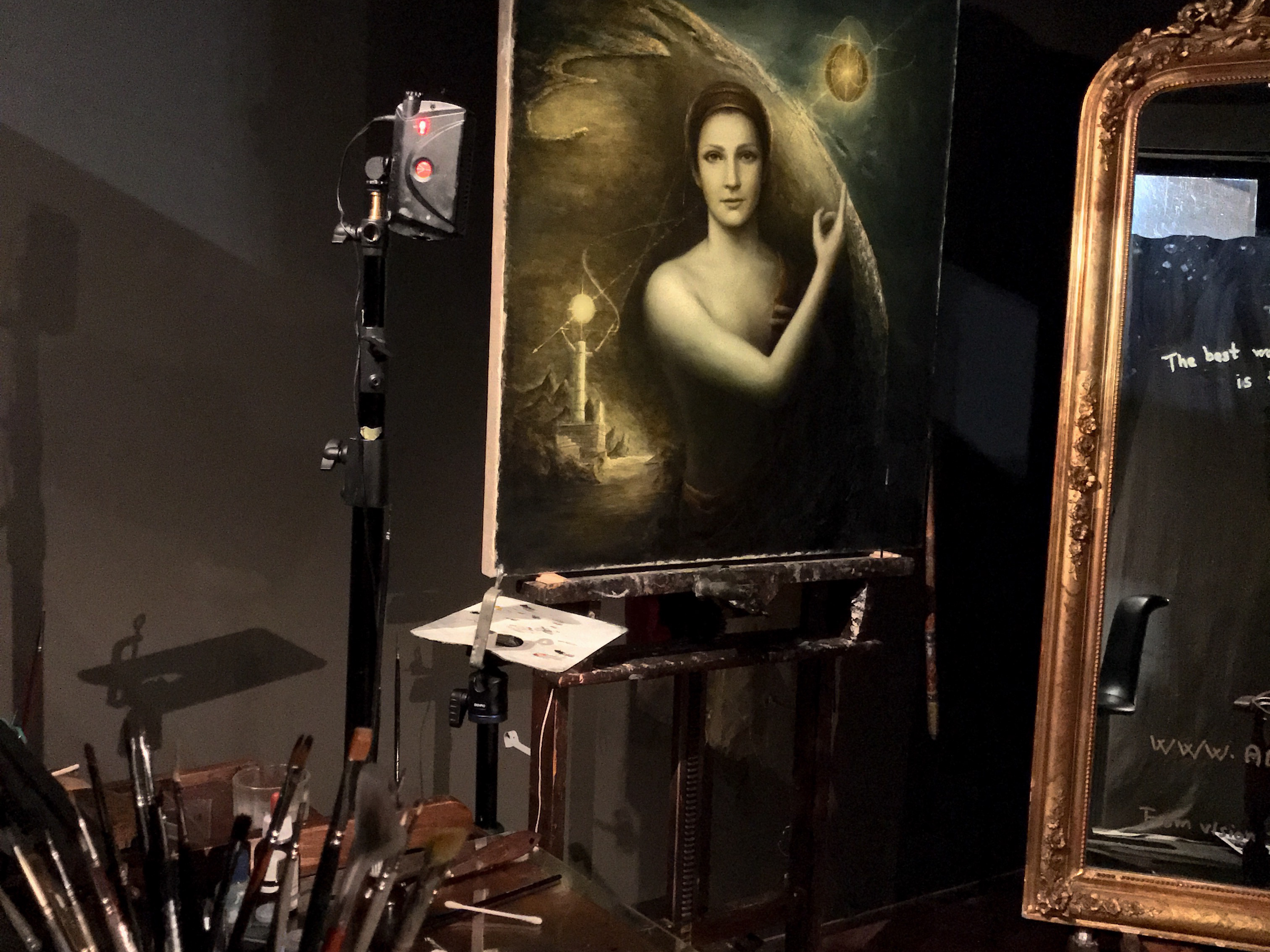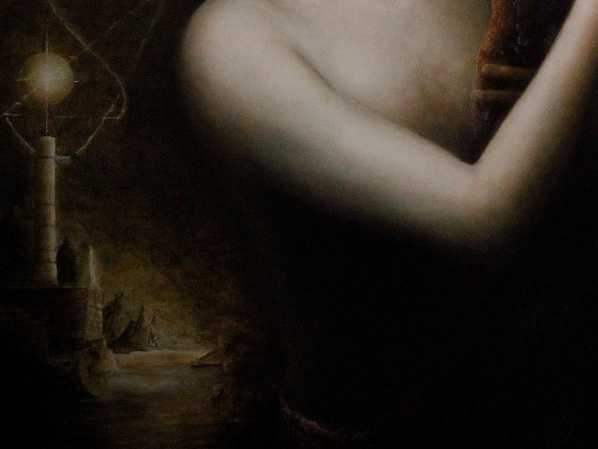Execution of Dead Color-Underpaint.
The second stage after underdrawing is a process called “dead-coloring”, also referred to as “underpainting”. Dead-coloring was one of the key techniques applied during the Renaissance and the pictorial strategy was used until the French Revolution. Without an adequate theoretical knowledge and mastery of this technique, you will not be able to achieve a satisfactory art-work. The technique is called dead-coloring due to the fact that only a few colors are applied at this stage (usually lead-white or lead thin yellow, raw umbra and maybe some boneblack in the final stage). Dead-coloring was so important that it was mandatory in the Flemish-school.
Dead-color technique is seldom used by artist today. This is perhaps because they don`t understand why they should use so mush time to paint with dead-color and then cover it with new paint. Today most of the artists paint directly on a white commercially-prepared and inexpensive canvas, with a full color palette, often without a plan or drawing on the canvas. As a result of that, they don`t understand why the function and the practice of underpainting/dead-coloring is comprehended.
Dead-color technique is a kind of a monochrome version of the final painting. The advantage is that the artist can fully concentrate on the main compositional elements, details, volume, contrast, anatomy and create illuminations of dark and light. I recommend to execute the dead-color painting with a chiaroscuro effect. It was more or less common to “block out” areas with dull colors which anticipated the final colors. (This technique must not be confused with “hounding” which I will talk about later). Following this block-out method, each individual area will merge with the final color in a flat tint.
If the dead color technique is executed correctly, you will experience that this does not complicate the painting-process. You will also understand that it will save you a lot of time and frustration in the long run and a much better final result is obtainable. If you master the basic technique you will understand the logic in dead color underpainting.
